Ladies’ Shoe Buckles, metal and glass, c. 1780–1790s, DMDA handling collection
Meet the research team, from the University of York and beyond; the project design team; and the Advisory Board, made up of academics and curators from across the world.
Research Team
Professor Cordula van Wyhe
Senior Lecturer
Department of History of Art, University of York
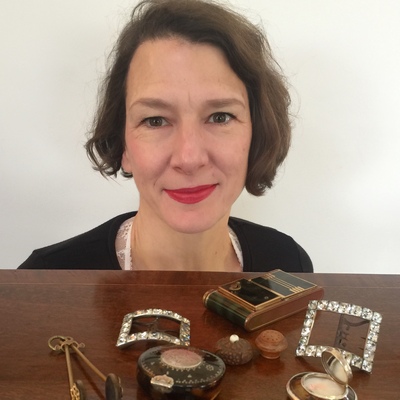
Cordula’s intellectual journey began in the Low Countries, where she first developed her interests in seventeenth-century religious and political imagery, royal patronage, and court culture. She is committed to a humane art history that strives to understand how our visual and tactile engagement with form and matter creates meaning. She conceived and edited books on Female Monasticism in Early Modern Europe (2009), Isabella Clara Eugenia: Female Sovereignty at the Courts in Madrid and Brussels (2012), Margaret Van Noort: Spiritual Writings of Sister Margaret of the Mother of God (1635–1643), trans. by Susan Smith with an essay by Paul Arblaster (2015), and Rubens and the Human Body (2018). In recent years, she has expanded her research and teaching to dress history beyond the sixteenth and seventeenth centuries. Cordula is passionate about teaching as a collaborative venture of co-discovery and knowledge creation.
Dr Susan Vincent
Research Associate
Centre for Renaissance and Early Modern Studies (CREMS), University of York

Susan has worked as a primary school teacher, a copy editor, and in a factory making polystyrene products (not in that order). In recent decades she has gained international recognition as a dress scholar. Originally addressing the cultural history of dress in early modern England, she continues to expand her research interests across chronologies and sartorial genres. She is the author of three books (Dressing the Elite: Clothes in Early Modern England, 2003; The Anatomy of Fashion: Dressing the Body from the Renaissance to Today, 2009; and Hair: An Illustrated History, 2018), and General Editor of Bloomsbury’s six-volume A Cultural History of Dress and Fashion (2017). Susan is adamant that academic writing needs to be dragged – kicking and screaming if necessary – into being more pleasurable and engaging.
Dr Mary Brooks
Director of the MA Museums & Artefact Studies,
Department of Archaeology, Durham University
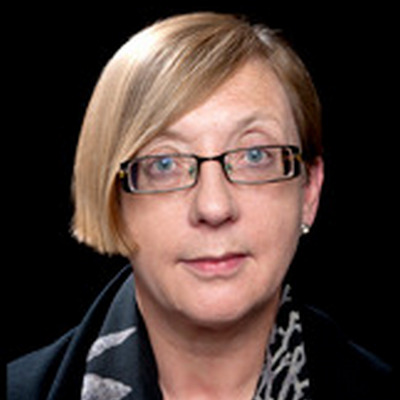
Mary is an Associate Professor, Department of Archaeology, Durham University, where she is Director of the MA Museums & Artefact Studies and also teaches on the MA International Cultural Heritage Management, having been Director of this programme for ten years, and the MA Conservation of Archaeological and Museum Objects.
Having worked in the book world and management consultancy, Mary then qualified as a conservator at the Textile Conservation Centre (TCC), Hampton Court Palace/Courtauld Institute. She undertook conservation and curatorial roles in Europe, America and England before returning to the TCC as Head of Studies and Research. She was Acting Director of Studies, MA Cultural Heritage Management at the University of York and Monument Fellow at York Castle Museum.
She is particularly interested in applying object-based research and conservation approaches to the interpretation of cultural artefacts as a means for enhanced public engagement. Research interests include seventeenth-century English domestic embroidery; the use of X-radiography for understanding of textiles and dress; and vestments and sacred textiles, as well as regenerated protein fibres. She has guest-curated two exhibitions at the Ashmolean Museum, most recently The Eye of the Needle. She is a Governor of the Pasold Fund and a Trustee of the Textile Conservation Foundation.
Gil Dye
Independent researcher and lace maker

Gil is a lace maker, teacher and researcher with a special interest in 16th- and early 17th-century bobbin lace, and a general interest in all handmade textiles – their tools, techniques and materials. She is the author of bobbin lace books for beginners and for those interested in recreating early bobbin lace; also, with Jean Leader, a lace identification book that concentrates on 19th- and 20th-century laces (hand and machine): Lace Identification: A Practical Guide (Crowood Press, 2021). Lace was enormously important in the nineteenth century, first as a handmade fashion fabric (later for domestic use) and then as one of the major drivers of the industrial revolution.
Gil will assist the DMDA with the gallery on parasols many of which feature lace as part of their canopy.
Maria Hanson
Department of Art and Design
Sheffield Hallam University

Maria is subject tutor for Metalwork and Jewellery students on the MA Design Course at Sheffield Hallam University. Her research is primarily practice-led, but is underpinned by historical and contemporary cultural theory. Through the production of artefacts, she explores the relationship between jewellery and objects to body and place. Sensory experience through the interaction of these objects challenges the wearer or user’s emotive, physical and visual perceptions. Recent work has focused on the function and value of contemporary objects within both identified rites of passage and religious and domestic rituals.
She is involved with various regional and national organisations in projects that promote, advance and disseminate excellence within the field of silversmithing and jewellery. These include the Sheffield Assay office, The Company of Cutlers in Hallamshire, Sheffield Galleries and Museums Trust, Arts Council Yorkshire and the Goldsmiths’ Company.
Dr Chris Holland
Senior Lecturer in Natural Materials
The University of Sheffield

Chris is a senior lecturer in Natural Materials at the Department of Materials Science and Engineering at the University of Sheffield. He has pioneered the use of physical science tools to gain new and deeper insights into the biodiversity, structure, and evolution of natural materials with specific reference to silk. He was part of the ‘Oxford Silk Group’ at Oxford University led by Prof Fritz Vollrath; a research project dedicated to understanding the evolution, ecology, physics, and chemistry of silk. Silk was an important material for the dress accessories of the past, specifically used in the manufacture of parasols.
Vanessa Jones
Curator of Fashion
Rijksmuseum, Amsterdam
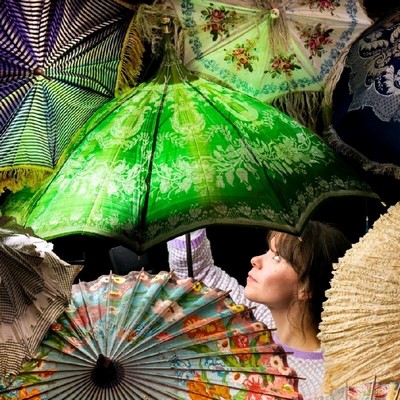
Vanessa is a curator and lecturer of dress and textile histories and theories. She has worked within the heritage sector for a decade and has taught in higher education for the last two years. She is an expert in curatorial practice around diversifying narratives of eighteenth-century dress, with broader specialisms including sustainable practices of dress consumption and production, global networks of trade, decolonisation and women’s history. She was the lead curator of the exhibition Fast x Slow Fashion (2020) and co-curator of Cotton Connections (2023), at Leeds Museums and Galleries.
Dr Sonia O’Connor
Honorary Visiting Researcher
Department of Archaeological and Forensic Sciences, University of Bradford
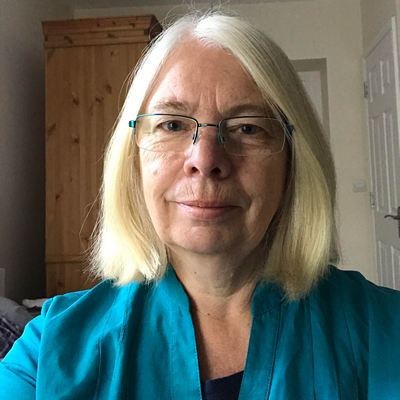
Sonia was originally an archaeological conservator, where her aim was to identify, reveal, interpret and preserve the information surviving on made objects, and her researches grew out of this experience. As an archaeological scientist, she specialises in the identification of objects worked in animal hard tissues, such as bone, ivory, horn, tortoiseshell, rhino horn and baleen, and in the X-radiographic investigation of cultural materials.
Drawing on her knowledge of low energy radiography and her passion for textile crafts, Sonia developed techniques for the radiographic investigation of archaeological and historical textiles in collaboration with Dr Mary Brooks and together they produced the book X-Radiography of Textiles, Dress and Related Objects (2007). Although supposedly retired, Sonia still undertakes materials identifications for heritage organisations and teaches her research specialisms internationally.
Dr Jack Ogden
Jewellery Historian
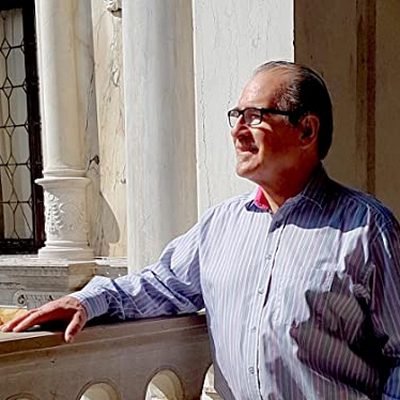
Jack is an internationally acclaimed jewellery historian with a particular interest in the development of materials and technology. He has held many prestigious positions over his long career: amongst them, the combined position of Secretary General to the World Jewellery Confederation and Chief Executive of the National Association of Goldsmiths from 1995–2000. He was also a Trustee of the Gemmological Association of Great Britain from 2015–2018. Since February 2018, he has been the President of the Society of Jewellery Historians. Since 2019. he has also been a Visiting Professor of Ancient Jewellery, Material and Technology, at the Birmingham School of Jewellery, Birmingham City University.
Jack has published widely on gems, as well as the use of gold and silver in jewellery from ancient Egyptian, Indian and Islamic cultures to nineteenth-century Europe. He also has considerable research expertise in the huge changes that Industrial Revolution technology brought about.
Jack will be part of the DMDA research team working on the collection of Georgian shoe buckles at Kenwood House, London.
Oscar Saurin
Silversmith
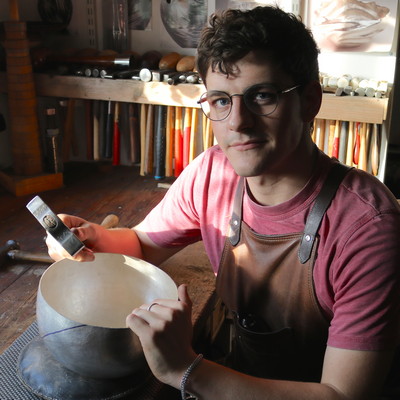
Oscar has been a silversmith for years. He began his career at the age of 16 as an apprentice. He has worked in the leading silver and goldsmithing companies in the UK, making work for Formula One, Rolls Royce – and also work for Middle Eastern markets. He now specialises in both traditional and contemporary making techniques for his own company, Oscar Saurin. He creates work for luxury brands as well as individual clients.
Erika Speel
Historian and artist
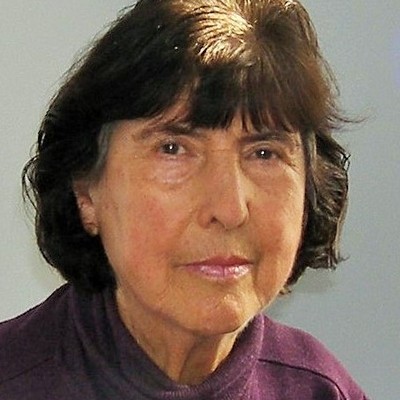
Erika is an historian of enamels and also an artist in this medium. As an historian, she is a researcher, cataloguer of historic museum and private collections, and a specialist writer.
Her major illustrated reference books are: Dictionary of Enamelling: History and Techniques (Ashgate, 1998 and Routledge, 2019) and Painted Enamels: An Illustrated Survey 1500–1920 (Lund Humphries, 2008). She has also contributed to the authoritative standard work Grove Dictionary of Art on French and German enamelwork. Over many years, she has been a regular writer for collectors and craft journals, spanning many genres of enamelwork. As contributing editor she also wrote regularly for the American specialist journal Glass on Metal.
She was formerly the working partner with Dr Heike Bronk, at the Institute of Inorganic and Analytical Chemistry of the Technical University of Berlin (TUB), presenting and publishing various papers on Limoges enamels. Jointly, they published a reference database ‘Enamel Painting: Materials and Recipes in Europe from c. 1500 to c. 1920’, in the Berliner Beiträge zur Archäometrie,18, 2001 (download the pdf via the Staatliche Museen zu Berlin). She also contributed the technical chapters for the museum catalogues of Limoges paintings in the collections of the Herzog-Anton Ulrich Museum (Braunschweig) and the Grünes Gewölbe [Green Vaults] Museum (Dresden).
With regard to enamel as a craft, she has long been a member of the Guild of Enamellers, with some years on the executive committee, and she served a 3-year term as Chairman and as an adjudicator of work. As one of the founding-members of the British Society of Enamellers, she was on their executive committee for some years, and has contributed to some of their exhibitions of artwork.
Enamelling is a versatile medium that was used in the decoration of many dress accessories – such as shoe and sash buckles, lorgnettes and quizzing glasses, compacts and much more.
Rick Sutton
Bone carver
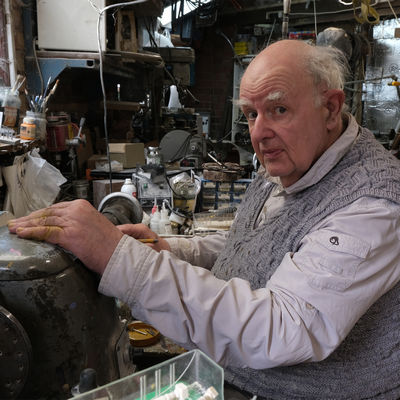
Rick’s career as a professional bone carver dates back to the early eighties when his wife suddenly decided to learn how to make lace. Very quickly, she was asking for lace bobbins as she did not like the ones then available. As I had been a time-served tool maker for over twenty years, Rick got the job! This soon developed into making bobbins, first for her classmates and then the general lace-making fraternity.
He soon started specialising in bone as the substance of choice, partly due to becoming violently allergic to many of the exotic woods he had previously used. After being made redundant from his job as a toolmaker for G.E.C and being ‘either too old or too highly qualified’ for any other employment, he started working full time as a bobbin maker. Over the years, he has taken his goods to a number of continental countries and to the USA, besides exporting to all corners of the world.
‘As I process the bone from the raw, I have learnt a lot about bone and its quirks. BSE has meant large-size bone is virtually unavailable, as cattle are now slaughtered at a much earlier age.’
Rick’s expertise in the properties and carving of bone will help the DMDA to understand the many eighteenth- and nineteenth-century historic dress accessories made of different kinds of bone.
Visit the Acorn Bobbins website.
Lauren Cheetham-Birmingham
Student Research Assistant
University of York
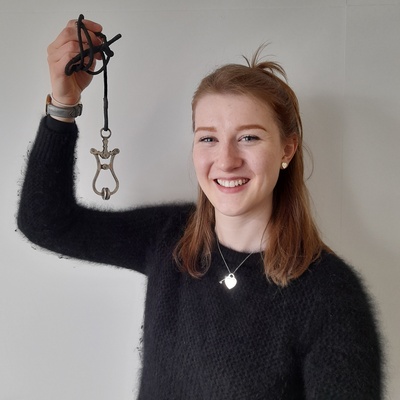
Lauren is the University of York Student- Research Assistant at the DMDA for 2022, a position sponsored by the Career’s Placement Project and the History of Art Department at the University of York. After graduating from a BA in History at York, Lauren is now undertaking an MA in Medical History and Humanities.
Alongside her studies, Lauren was part of the HerStory community project helping to create a biographical style article and presentation on a Victorian woman, Mary Anne Felgate, a ladies’ companion at The Retreat, which provided the foundations for a museum exhibition. She looks forward to exploring curation and the 19th century further, having enjoyed investigating the significance of the nurses’ uniform in her BA dissertation titled ‘The “ideal nurse” in the Cherry Ames Series and the Sue Barton Series: Post-war Britain and the NHS’s Working Women’. Her passion for interdisciplinary studies led her to this opportunity with the Digital Museum of Dress Accessories and she hopes to bring a variety of perspectives to her work supporting the museum’s curation.
Student Assistants
Alex Byas
University of York
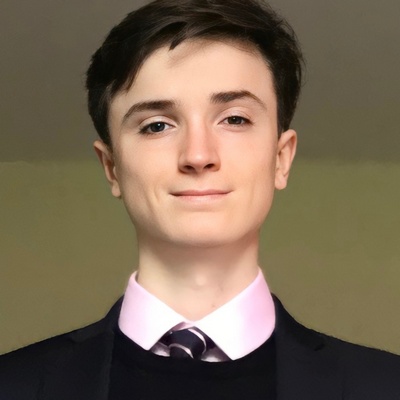
Alexander always had an indiscriminate and broad passion for the History of Art, be it the study of the Qin dynasty in ancient China to contemporary art. A seminal experience for him was his encounter with the Forbidden City in Beijing and the many hangers in which the Terracotta Army in Xian in China are kept. Since then, Alexander has become fascinated by the changing and varied visual media, meanings, and discoveries that he can study as part of his degree. He has a particular interest in the wider cultural impact of the 15th-and 16th-century Italian Renaissance and its afterlife in the artistic practice of today.
Alexander is part of the team for the 2022/23 collaborative research project between the DMDA and Leeds Museum and Galleries on their parasol collection.
Natasha Crane
University of York

Natasha is a second-year History of Art student at the University of York. She found her love of art in the Impressionist and post-Impressionist collections in London, where she grew up. Since then, she has increasingly become interested in 20th-century art, fashion, and design/making. She enjoys exploring the extensive collections of the Victoria and Albert Museum on rainy days.
Natasha also acts as a Gallery Assistant for the Norman Rea Gallery at the University of York, where she works as part of an amazing team to curate and put on exhibitions and events.
Natasha is part of the team for the 2022/23 collaborative research project between the DMDA and Leeds Museum and Galleries on their parasol collection.
Elizabeth Dunnett
University of York

Coming from an academic background in archaeology, Elizabeth is a dress historian with almost a decade of practical experience in historical sewing. Though her main focus is the long eighteenth century, she has worked on projects spanning the sixteenth through to the twentieth centuries. She is currently studying for a Masters in Eighteenth-Century Studies at the University of York.
The DMDA Handling Collection has some items of historical dress (including shoes) and their supporting garments, so that we can show the relation of dress accessories with the body. Elizabeth helps the DMDA with any needle and sewing work required for outreach events.
Katie Wilkinson
University of York
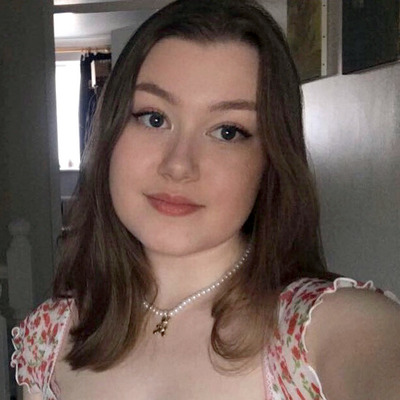
Katie is a third-year undergraduate History student at the University of York. She has developed a particular interest in women’s experiences in past societies and their engagement with cultural forms. Her interest in this field of study was sparked by degree modules on eighteenth- and nineteenth-century female fashion.
Katie completed a project for the York Archaeological Trust where she worked as part of a small team to curate an exhibition on the life of an eighteenth-century seamstress. Here she furthered her skills in object handling, photography, and museum labelling. She is also a regular contributor to the he York Historian with articles on women of the past who have been overlooked by historians.
Katie is part of the team for the 2022/23 collaborative research project between the DMDA and Leeds Museum and Galleries on their parasol collection.
Advisory Board
Charlotte Gere
Independent Scholar

Charlotte Gere is an exhibition curator and social historian, with an emphasis on women’s place in the arts, design and decoration. She has published on Victorian decorative arts, dress, jewellery, homes and gardens and women collectors. She is the author of Jewellery in the Age of Queen Victoria, Mirror to the World (with Judy Rudoe), and Artistic Circles, Design and Decoration in the Aesthetic Movement, on artists’ houses, both published in 2010. Recent catalogue essays include studies of Lawrence and Laura Alma-Tadema at home, Edward Burne-Jones portraits, James Tissot’s London house, and the Pre-Raphaelite Sisters’ domestic responsibilities. In 2019 she co-curated the British Museum exhibition ‘At Home: Royal Etchings by Queen Victoria and Prince Albert’, which was accompanied by a display of an important gift of hair-work jewellery and accessories.
Dr Helen Manchester
School of Education, University of Bristol

Helen’s research explores the co-design of cutting-edge creative digital technologies with groups who might generally feel themselves to be excluded from the digital environment. She works across disciplines to collaborate on methodologically innovative research projects with artists, technologists, young and older people, community organisations and policy-makers. She was involved in several projects on Bristol’s digital strategy, which resulted in publications on ‘Bristol City’s Future and the Role of the Digital’ (2019) and ‘Co-Creating a City Scale Digital Strategy and Framework: A Systems and Co-Production Approach’ (2019). She was also the principal investigator on a project ‘Empowering Citizen-Orientated Smart City Innovation in Mexico’ (2019–21) and is currently leading a project on ‘Connecting through Culture as We Age: Digital Innovation for Healthy Ageing[S1] .’ Besides her extensive research on inclusiveness, and intergenerational exchange, she recently expanded her research to ‘Beyond Landscape’s Visible Realm: Recorded Sound, Nature and Wellbeing’ (2020).
Prof. Alison Matthews David
School of Fashion, Ryerson University

Alison specialises in archival and object-based dress research, including the incorporation of scientific insights. Her book Fashion Victims: The Dangers of Dress Past and Present (2015) and its related exhibition (Bata Shoe Museum, co-curated with Elizabeth Semelhack, 2014–18) included such scientific approaches to illuminate health and ethical issues in the making and wearing of nineteenth- and early twentieth-century garments. She is committed to making history more accessible to the general public, and co-founded and co-edits the open access journal Fashion Studies. She has also co-authored (with Serah-Marie McMahon) a book for 9–12-year-old readers, Killer Style: How Fashion Has Injured, Maimed and Murdered Through History. Her current project is ‘Fabric of Crime: Forensic Histories of Fashion’. It has produced preliminary articles already, and will culminate in a book and exhibition.
Dr Janina Ramirez
Harris Manchester College, University of Oxford
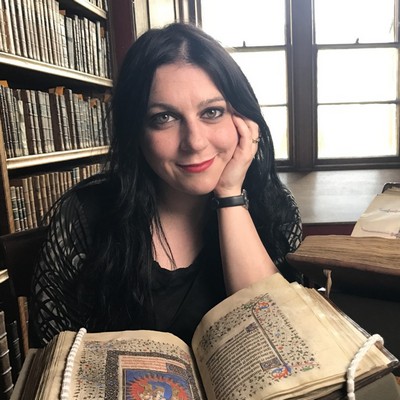
Janina is a Research Fellow in History of Art at the University of Oxford. She gained her PhD in ‘The Symbolic Life of Birds in Anglo-Saxon England’ at the Centre for Medieval Studies, University of York, where she remains an Honorary Fellow. Janina has written a number of books, both fiction and non-fiction, including The Private Lives of Saints (2015), Julian of Norwich (2017) and The Viking Mystery series for OUP which won the Young Quills award in 2019. She has written and presented over thirty documentaries for BBC Four, including ‘The Hundred Years War’ and the ‘Art Lovers’ Guide’ Series. She has a popular podcast – ‘The Art Detective’ – and is a regular contributor to television and radio, including ‘Front Row’ for Radio 4.
Dr Alun Withey
Centre for Medical History, University of Exeter

Alun is an expert in early modern medical history, and his research interests include domestic medicine, the medical marketplace, gender and the sick role, and the lived experience of sickness. He is also interested in the area where fashion, technology and heath intersect, recently completing a major research project on facial hair. This culminated in the publication of Concerning Beards: Facial Hair, Health and Practice in Britain, 1650–1900 (2021), which includes the changing understandings of the nature of facial hair, the changing role of barbers/barber-surgeons, and the impact of new technologies upon decisions to shave. Alun is the author of two further books: Physick and the Family: Health, Medicine and Care in Wales c. 1600–1750 (2012), and Technology, Self-Fashioning and Politeness in Eighteenth-Century Britain: Refined Bodies (2015).
Design
Dr Marjorie Coughlan
York Art History Collaborations (YAHCs) Administrator, Department of History of Art, University of York

Marjorie designed and set up this initial pilot DMDA website, launched in November 2021. She has loved working on this project, which is giving her new insight into bits and bobs both handed down through the family and picked up at antiques fairs and the like since she was a child. Her research interests focus on nineteenth-century sculpture; landscape painting, especially in Italy; the history of photography; and children’s literature and book illustration.
Benjamin Bowles
Digital Impact Strategist

Benjamin is a Collections and Archives Assistant at the York Archaeological Trust and Director of the online memorabilia museum Fencing Arms & Artifacts. He has spent more than 12 years publishing web and social content for small businesses, non-profits, and heritage causes. Benjamin is currently finishing a masters in Digital Heritage at the University of York and specialises in digital imaging and digital collections management.
Ed Hall
MacroPro Photography

Ed is a museum and scientific photographer with a particular interest in historically important objects, and in finding new ways to exhibit and bring life to museum collections.
By developing novel imaging methods in ultra-macro photography, 360-degree object imaging, and high resolution scanning, his work has become internationally important for a range of archival and public engagement purposes.
Ed continues to develop his work through his business MacroPro Photography. In 2020 he was awarded a Winston Churchill Memorial Trust Fellowship to research and advance museum photography working practices for the benefit of the UK museum industry.
VIDAVEO produced the curatorial videos:
Adam Gill
Creative Producer/Director, Vidaveo

Adam Gill is a creative producer/director with extensive experience in international broadcast television production. He has directed productions for the Discovery Channel, Disney, Sky Italia, Aljazeera English Channel and the BBC. As well as developing projects for online and social media, his company ‘VIDAVEO’ has concentrated on developing innovative uses of new technology, specifically interactive and immersive 360 experiences.
The Highlights of Adam’s career so far have been, interviewing Stephen Hawking for a Discovery Special Feature, Exec Producing Disney Channel Italia’s daily live show, filming a Rocket Launch in Kazakhstan and being Lead Creative Producer for Aljazeera’s US Presidential Coverage.
Add Two Digital is the digital agency who will be creating the final project website, including animations and interactive charts:
Adam Frost
Content Director, Add Two Digital

Adam Frost was formerly head of data visualisation at the Guardian’s digital agency. He is now content director at Add Two, an agency specialising in data visualisation. His work has appeared on the Guardian, the New Statesman, Buzzfeed and elsewhere.
Tobias Sturt
Creative Director, Add Two Digital

Tobias Sturt was head of creative at the Guardian’s digital agency and is now creative director of Add Two. He has been working in digital storytelling for almost two decades using all kinds of media – from web to TV, games and infographics.
Jim Kynvin
Add Two Digital

Jim Kynvin is a senior designer at Add Two. He has created and developed concepts for a whole range of projects – clients have included the Royal Society, Wellcome Trust, London First and Nestle.


